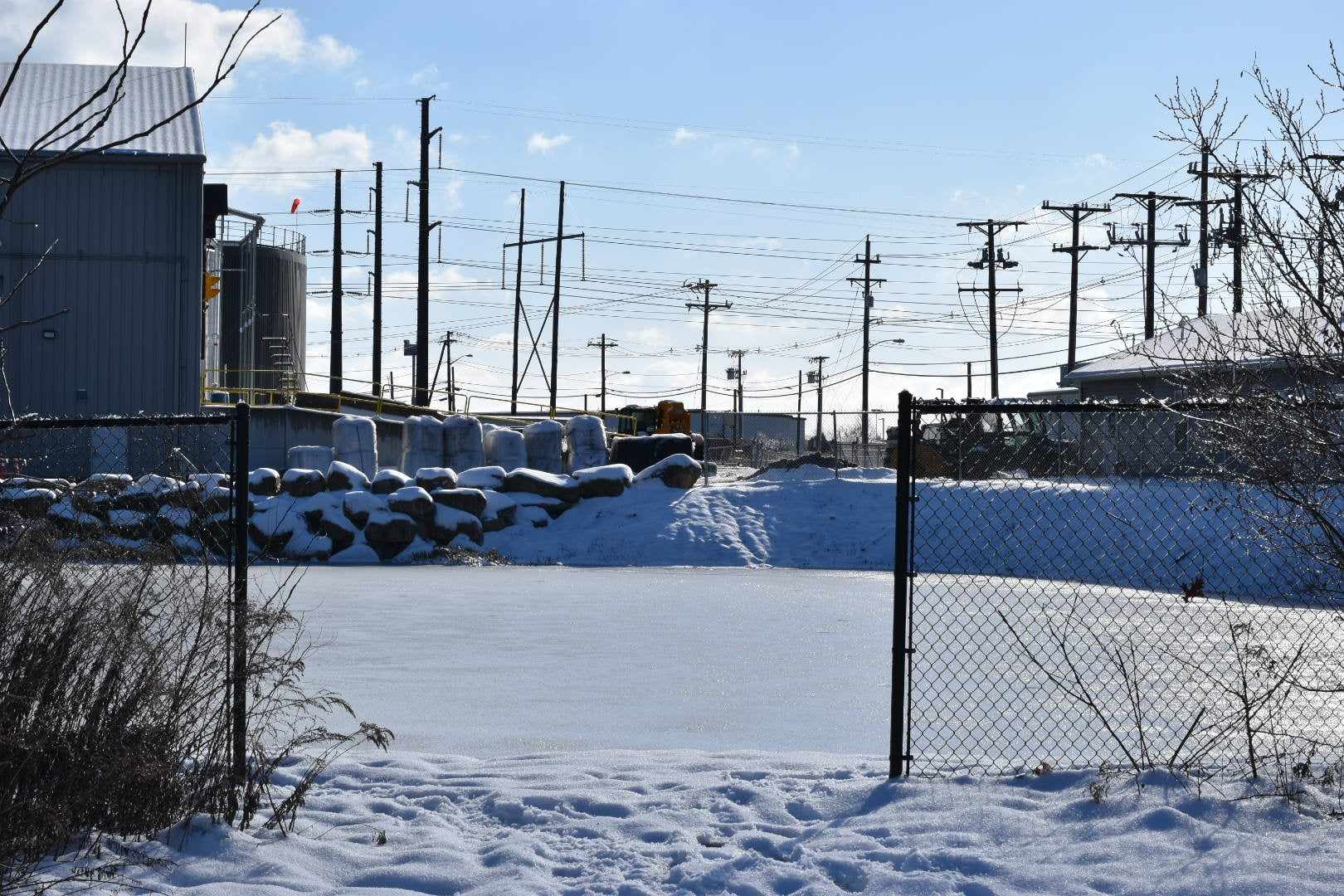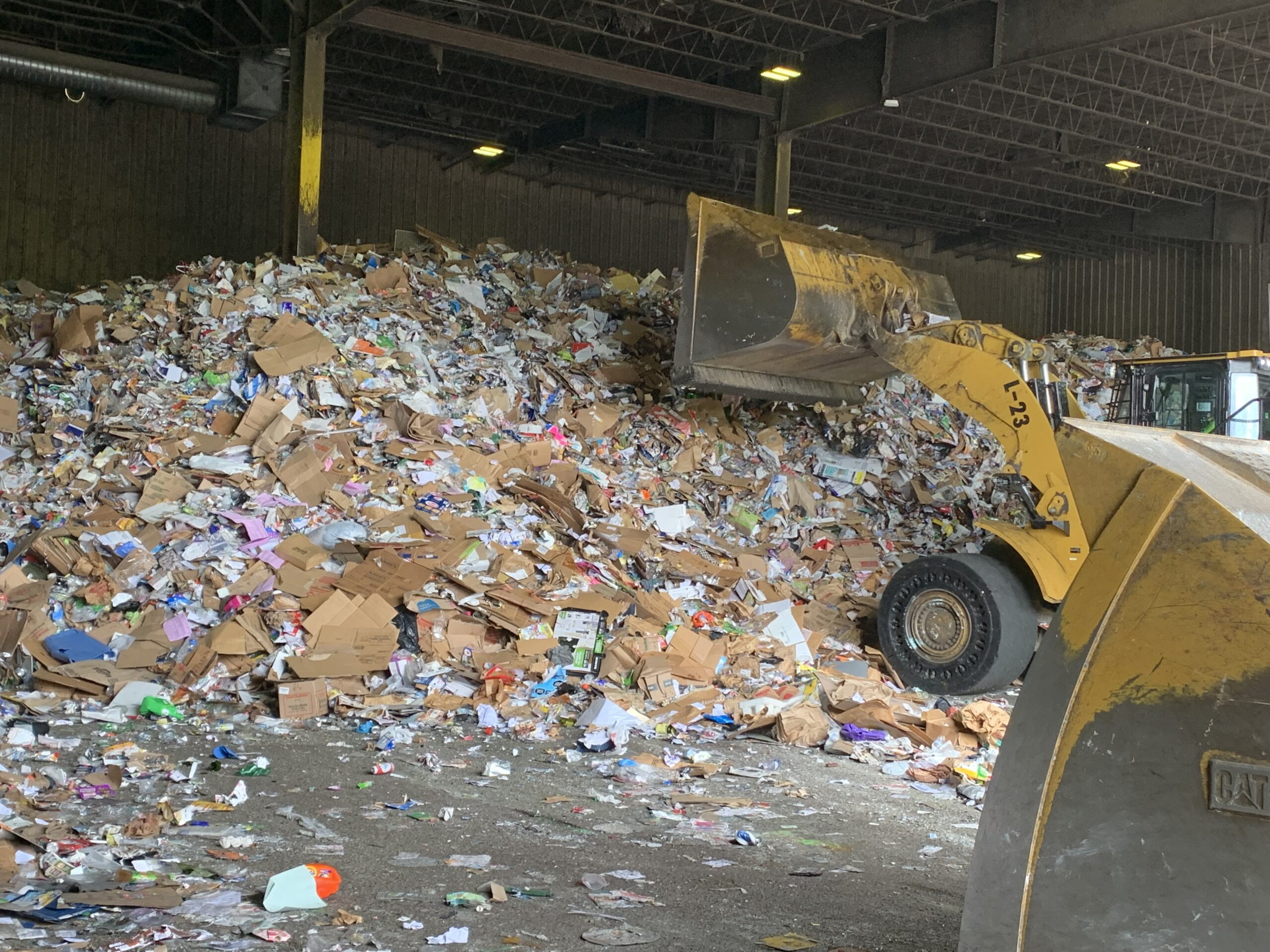Our Lives are Wrapped Up in Plastic
March 16, 2010
WAKEFIELD, R.I. — Just thinking about what it would take to lead a plastic-free life overwhelms Catherine Weaver.
Plastics have so infiltrated our lives that the South Kingstown resident admitted she felt paralyzed to do anything about it. “If I tried to eliminate plastics from my life, I couldn’t get out of my front door,” said Weaver, who owns a landscape design company called TUPELO Gardenworks Ltd. “I wouldn’t even have a house. It’s a major time commitment to eliminate plastics from your life. The more you learn, the more you’re overwhelmed.”
Nearly one in three things in modern life is made of or contains plastic. It has many useful applications, some of which save lives. But plastic also has become the emblem of a world swimming in waste.
Billions of tons of it have been produced in the past five decades, and every nurdle — tiny pellets of plastic about the size of lentils that can be melted down and formed into banana guards and fake Thanksgiving Day wishbones — is still wreaking havoc, from choking to death 2 million birds and marine animals a year to leaching out dangerous chemicals that accumulate in human tissue.
The married mother of four grown children has been environmentally consciences for most of her adult life. She’s been using cloth bags to go grocery shopping for close to a decade— she has cloth Almacs bags to prove it. She and her husband, Bill Mauran, have stopped eating meat at least two days a week.
A few years ago, to save money, to decrease pollution and to help cut her addiction to fossil fuels, Weaver adopted a rule for herself that she calls “Slow Sundays.” No driving allowed, either behind the wheel or in a passenger’s seat.
“It’s made a huge personal impact, but has it saved the planet? No,” Weaver said. “But if everyone stopped driving one day a week that would make a big difference in the amount of CO2 we belch into the air.”
Weaver has broken her Sunday rule on occasion, but has found it to be rather a “painless” decree.
To live plastic-free, however, would be a “stressful, time-consuming job,” Weaver said.
“I have been thinking about trying this for probably a year, maybe two,” said the University of Rhode Island graduate. “I would get so overwhelmed just thinking about really trying it. I don’t even remember what gave me the idea. I think it was a day when I was particularly disgusted by the amount of plastic garbage everywhere. You can recycle some of it for reuse, but you can’t make it go away. I don’t really care for the image of my plastic water bottle lasting longer than I will on this beautiful earth.”
It frustrates Weaver that every year in the United States 2.8 million metric tons of plastic bottles are thrown away. It bothers her that 12 million barrels of oil were used to make the 88.5 billion plastic bags consumed in the United States last year.
“It’s your choice to be green and you have to be willing to make major changes,” she said. “It’s easy to say I want to be green, but it’s much harder to actually follow through on that. We’re constantly bombarded to consume more.”
Weaver and her daughter Meghan McDermott recently took their first steps toward reducing the amount of plastic they consume. Their journey started at the supermarket.
As soon as they walked through the automatic doors at Belmont Market on Kingstown Road on a recent weekend afternoon, they knew a grocery store wasn’t an easy place to begin cutting down on their plastics intake.
“There’s going to be quite a few roadblocks to get around,” Weaver said, after only a few steps into the market. “I’m going to have to deny myself something I want, and that’s a foreign idea for our culture.”
The first stop was the deli, and Weaver quickly discovered her favorite lunch food was off the menu. Willow Tree Farm chicken salad comes packaged in plastic. In fact, for those without the time and energy, or both, to make their lunch, all of the store’s ready-made lazy lunches are served in plastic.
Weaver politely asked the woman behind the deli counter not to wrap her smoked turkey breast and white cheese in plastic. Weaver had to ignore the fact both were on display behind the glass wrapped in it.
Aisle after aisle, it was difficult to find food that hadn’t been shipped in plastic, wasn’t wrapped in plastic or hadn’t been placed in Styrofoam and then covered in plastic.
Weaver’s mother was visiting from Georgia and that night’s dinner menu featured vegetable stew and beef stroganoff. As she and Meghan placed individual vegetables in the mesh bags they had brought with them, they discovered they would have to do without a stew staple — cauliflower. They couldn’t find any that wasn’t wrapped in plastic.
Instead of buying grape tomatoes for $2.99 a pint — they were trapped in a plastic container — the women settled for cherry tomatoes on the vine — for $6.99. Weaver’s husband would have to do without strawberries — they also were ensnared in plastic — until they are in season locally and available at farmers’ markets.
Weaver’s favorite snack, butterscotch, pecan cookies, were off-limits, and she passed on whole-bean coffee, which was dispensed from plastic containers.
“Plastic is everywhere,” said Weaver, realizing she brought deli meat preserved in plastic but passed on coffee stored in plastic bins. “Where do you draw the line?”
Her daughter couldn’t find any yogurt that didn’t come in plastic, so her usually workday lunch will be altered. The same for sour cream, so the mother-daughter cooking team went with cream of mushroom soup in a can as a replacement in their beef stroganoff recipe.
That wasn’t the only alteration to the recipe. Velveeta in a cardboard box was substituted for egg noodles in plastic bags.
Small, white plastic tops foiled their attempts to buy chicken broth, cooking stock and milk — unless they went with buttermilk or Lactaid. Plastic screw-off tops also thwarted their attempt to buy orange juice. The frozen kind is sealed with a strip of tear-away plastic.
For condiments, they found two kinds of mustard with plastic-free packaging and one maple syrup that didn’t feature some form of it.
Toothpaste was out; baking soda for brushing was in. But her toothbrush is made of plastic. Cleaning products, even the environmentally friendly ones, come in plastic. More baking soda, this time with some vinegar. Individual bar soaps are OK, but deodorants are entombed in plastic.
It usually takes Weaver 20 to 25 minutes to go food shopping. This special trip took an hour and 20 minutes, and her shopping cart looked noticeably different filled with food in plastic-free packaging. She also spent $12 less than she usually does during a typical food-shopping run.
“There really was not anything I could not live without when push came to plastic. Certainly, some of the products will require more research to replace (deodorant, for example) and trips to other sources to attempt to buy things in bulk with my own non-plastic containers,” said the 53-year-old Weaver. “I was fascinated to observe how many memories surfaced of the way things used to be packaged before plastic was everywhere in everything. It’s amazing what has occurred in just my short adult life. It’s easy to accept the next lifestyle convenience so enticingly packaged with the promise of a better you, a more entitled, deserving you. You accept it all by default because the opposite choice requires real work and thought to reject and/or change — and who has time for that?”
Categories
Join the Discussion
View CommentsYour support keeps our reporters on the environmental beat.
Reader support is at the core of our nonprofit news model. Together, we can keep the environment in the headlines.
We use cookies to improve your experience and deliver personalized content. View Cookie Settings



